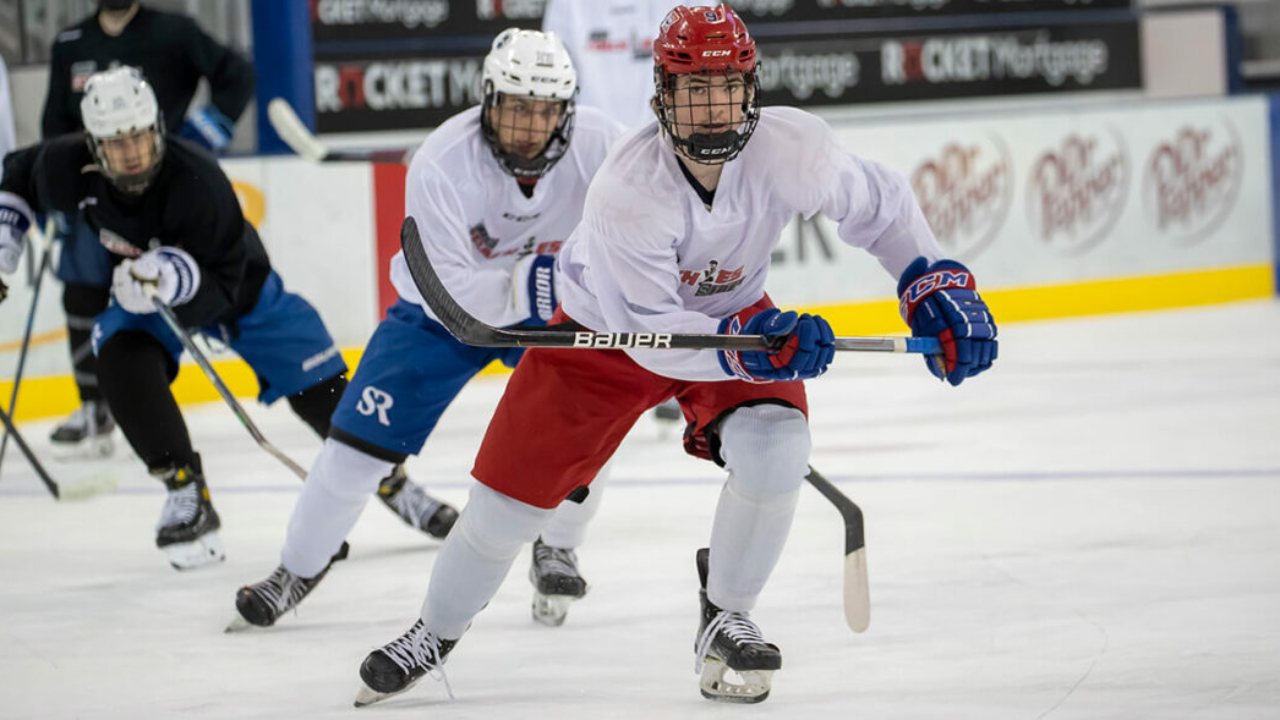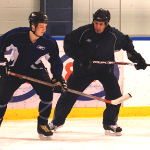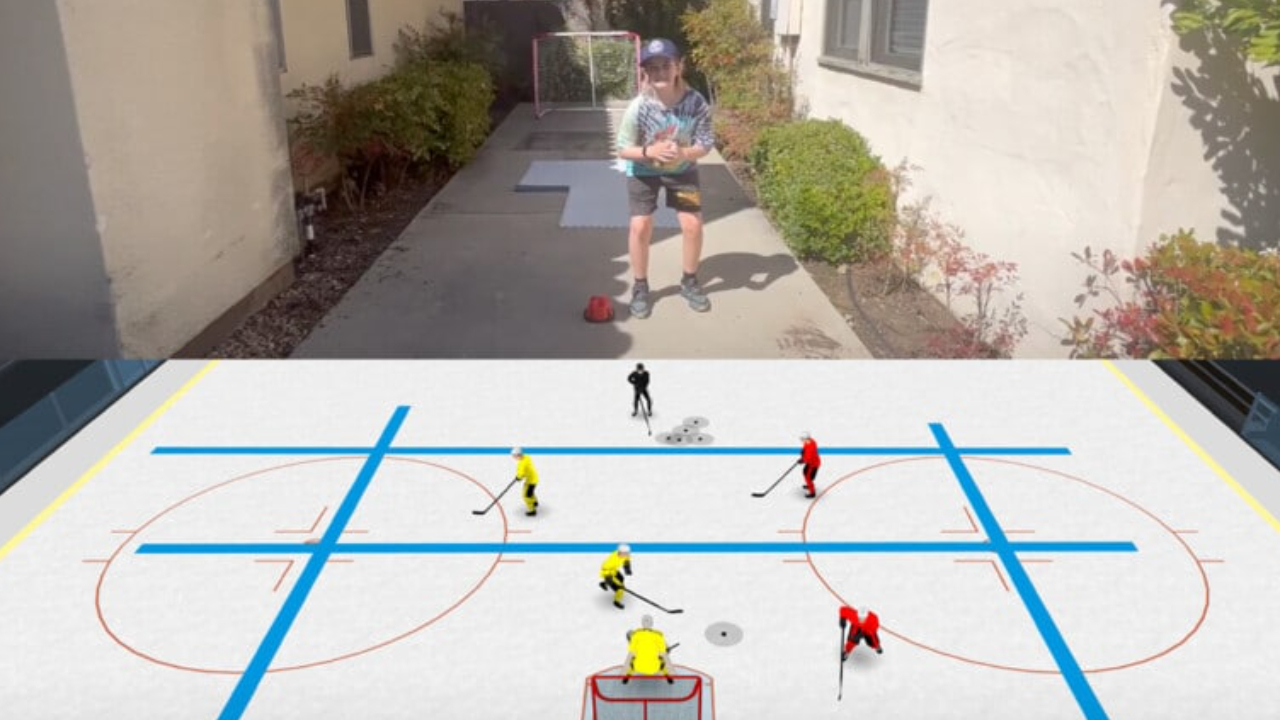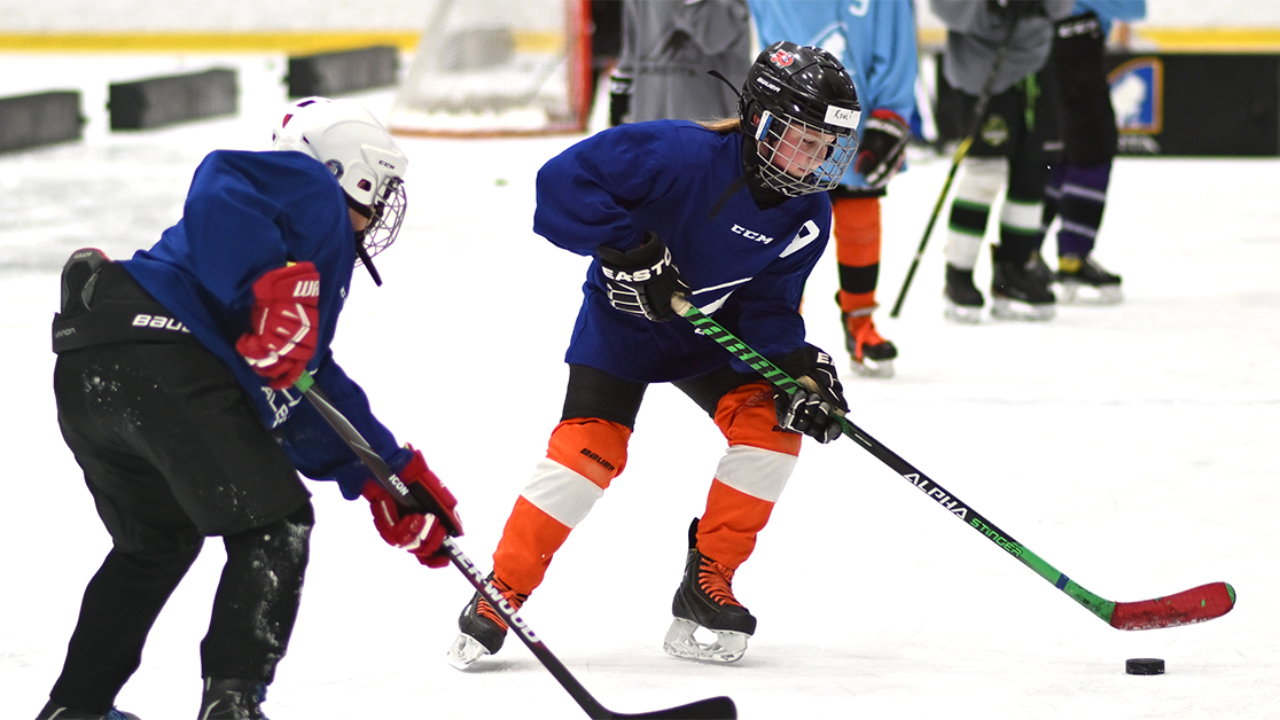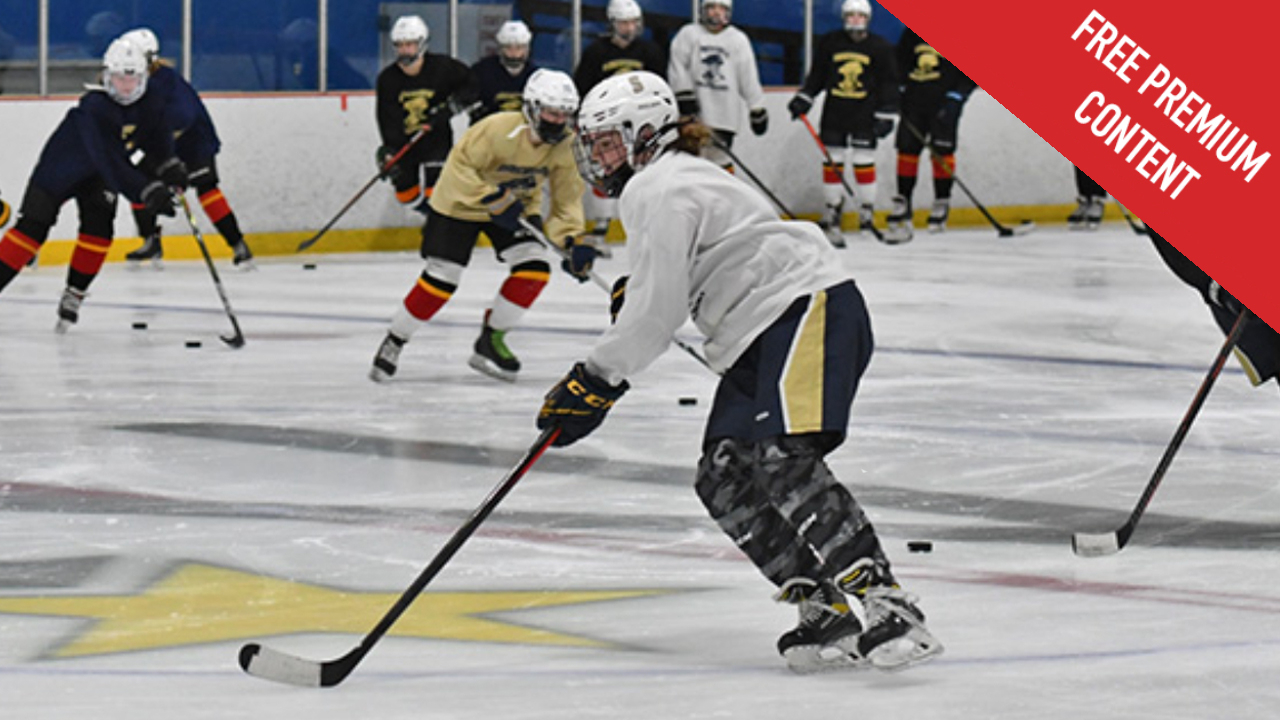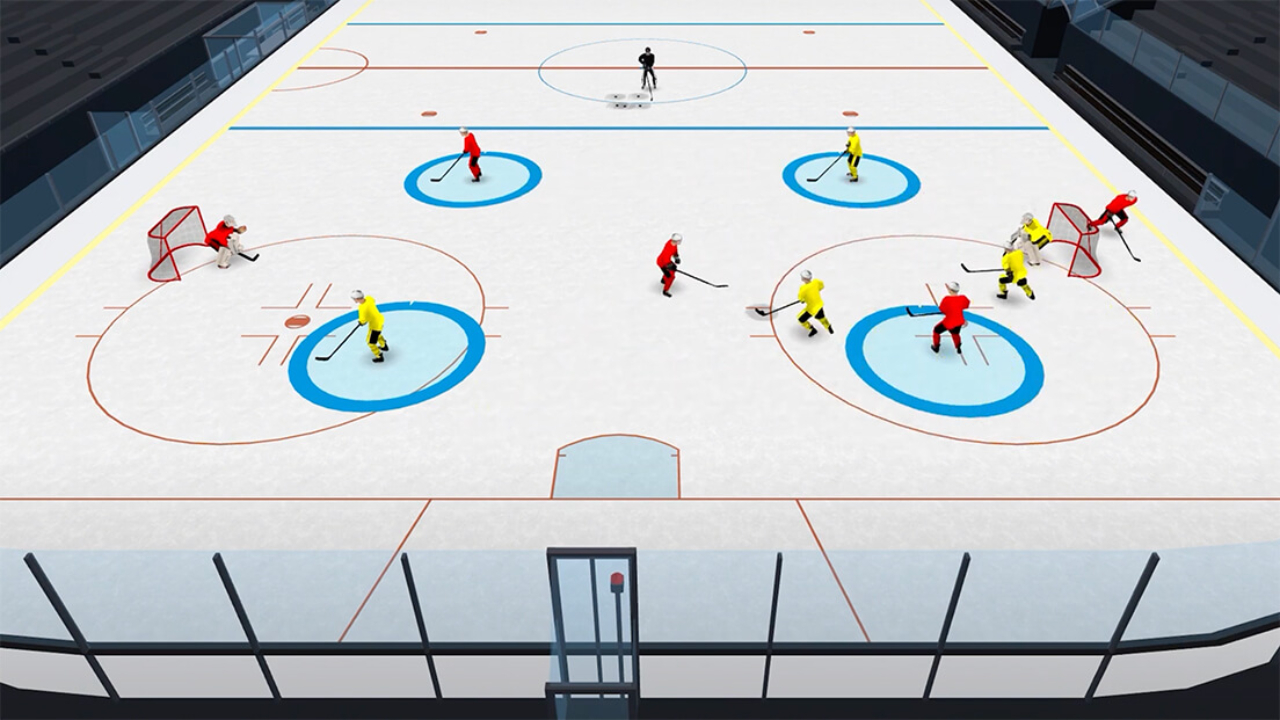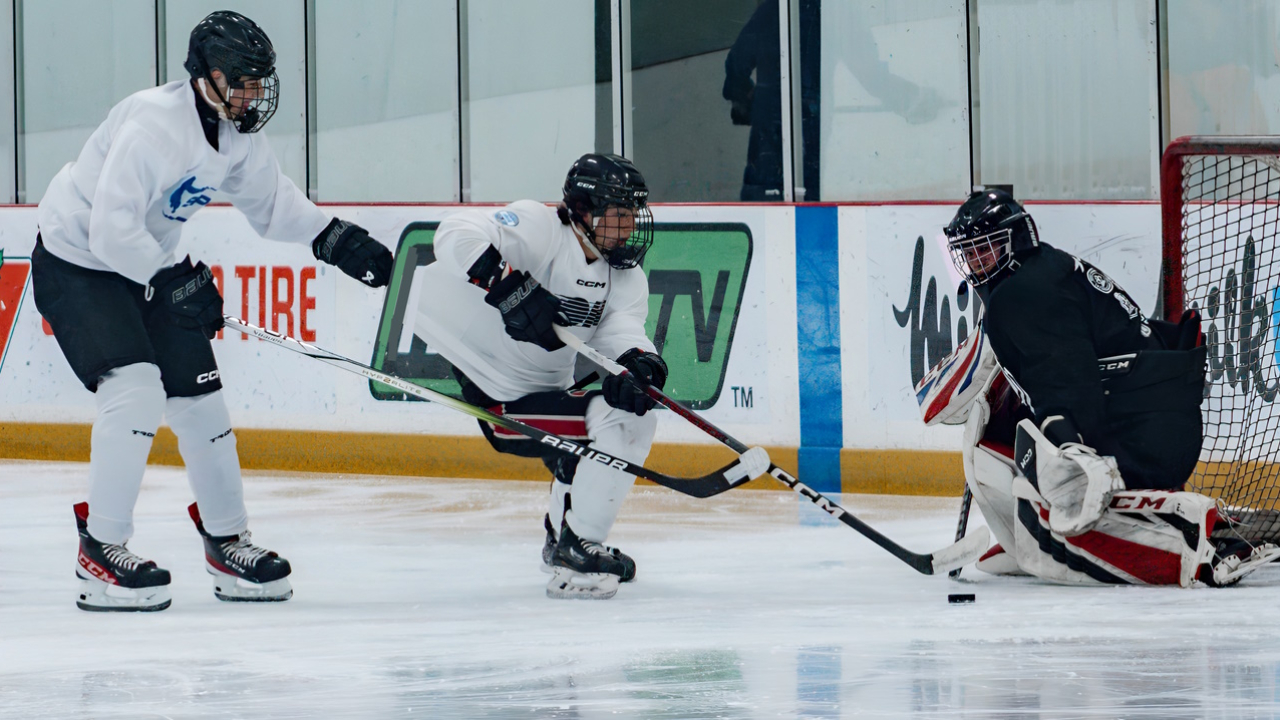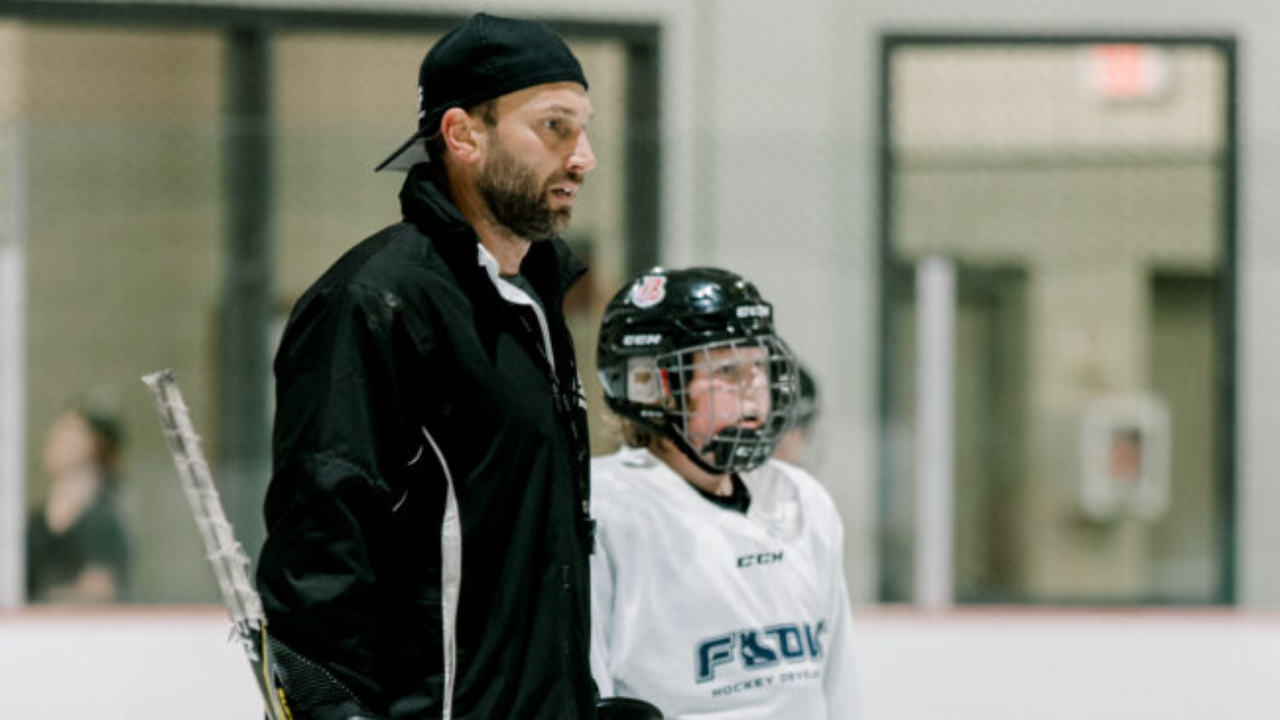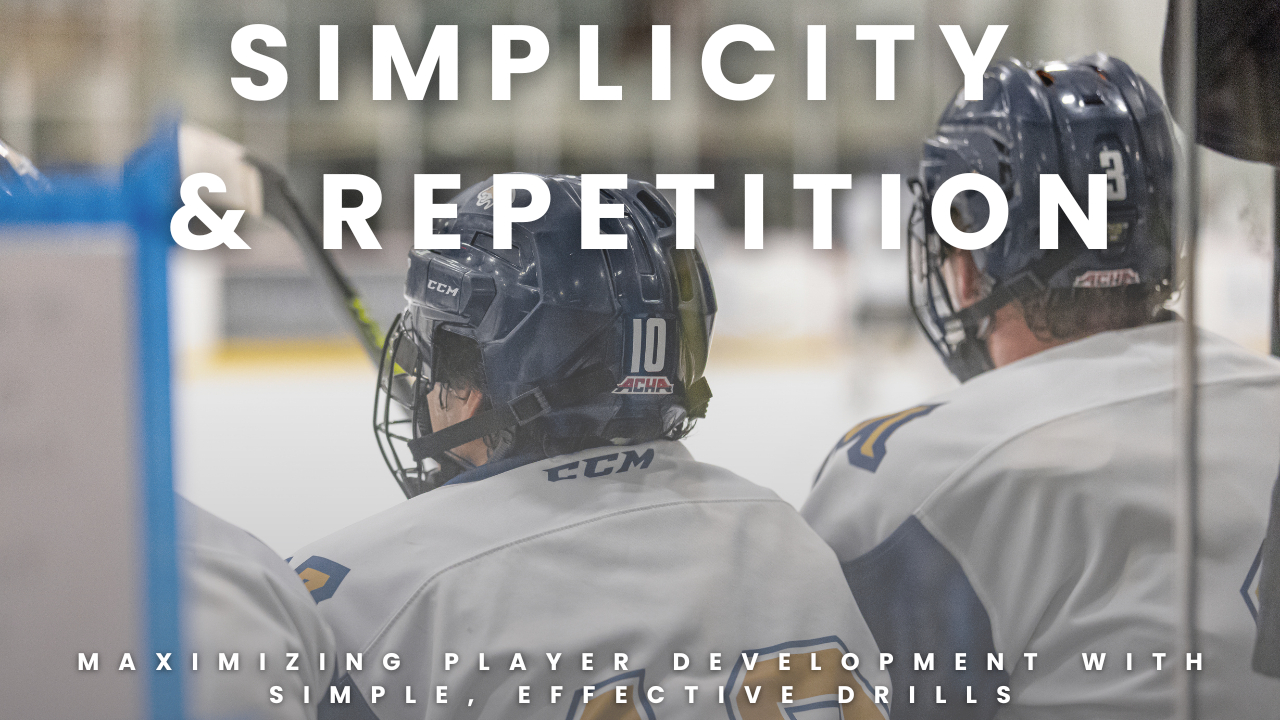
In the pursuit of building skilled, adaptable hockey players, sometimes simplicity is the best approach. As coaches, we all know that sophisticated drills can be engaging, but often, it’s the straightforward, repetitive patterns that yield the highest-quality development.
One drill I used recently with my college players involves a defeseman shooting from the blue line while a teammate screens the goalie. The pattern is simple: retrieve, pull, walk, shoot, screen, tip, repeat. This sequence is designed to reflect real game scenarios as closely as possible and allow the players to focus on a serious of closely stacked skills.
The value in drills like this lies in their repetition. Each rep helps the athlete fine-tune specific skills, from handling the puck under pressure to executing accurate shots through traffic. With every repetition, the player becomes more adept, building muscle memory and game-ready habits that transfer directly to live situations.
Why Simple Drills Can Yield Complex Results
A common misconception in coaching is that more complex drills automatically lead to better results. While complexity has its place, there is significant power in repetition and familiarity. The simplicity of this drill allows players to focus intensely on individual components of a successful play: skating, positioning, shooting accuracy, and timing.
Additionally, when drills are easy to understand, players can engage in quality reps without the mental load of constantly figuring out their next move. This is critical for developing “automaticity,” where players react instinctively and effectively during games without hesitation.
Adding Layered Progressions for Game-Readiness
While I believe in the power of simplicity, I’m also an advocate for adapting drills to be as game-relevant as possible. As players progress, we add layers to the drill: introducing pressure on the shooter, or simulating a net-front battle for the player screening the goalie. These adjustments elevate the drill’s difficulty, mirroring the unpredictability and intensity of actual gameplay.
These layered progressions not only make the drill more challenging but also enhance the players’ ability to perform under game-like conditions. With pressure and resistance added, they learn to react quicker, find shooting lanes, and adjust their positions based on real-time cues.
Building a Player-Centric Coaching Approach
Ultimately, my goal as a coach is to equip players with the skills and instincts to excel independently on the ice. By focusing on drills that prioritize quality, repetition, and game-relevance, I strive to develop athletes who can perform with consistency and confidence. A player who can navigate challenging scenarios—whether it’s getting a shot through traffic or setting a screen under defensive pressure—is a player who adds value to any team.
For fellow coaches, I encourage a back-to-basics approach when designing practices. Don’t overlook the power of simple drills with high-quality repetitions. Mastery doesn’t happen in one session or with complex playbooks. It happens through disciplined practice, consistent quality reps, and thoughtfully layered progressions that prepare players for real-world competition.

